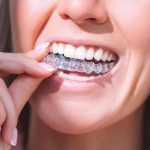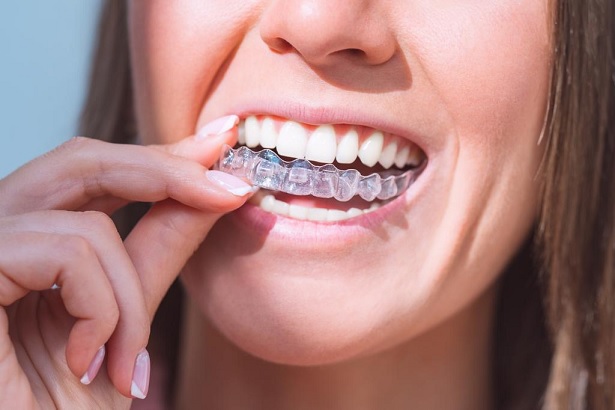Transform your smile with the right teeth straightener. Learn how to find the best one for you with our guide on choosing the ideal teeth straightener.
Understanding the Need for Teeth Straighteners
Explanation of crooked teeth and related dental issues
Crooked teeth occur when there’s not enough space for teeth to naturally grow in straight alignment, leading to overlap and misalignment. Such dental issues can result in difficulty cleaning, gum diseases, and premature teeth wear.
Importance of teeth straightening for oral health and aesthetics
Teeth straightening significantly improves oral health by reducing risks of decay and gum disease. Teeth straighteners correct misalignments, making cleaning easier and more effective. Aesthetically, straight teeth enhance one’s smile, boosting self-confidence and overall appearance.
Different Types of Teeth Straighteners
Overview of traditional metal braces
Traditional metal braces are orthodontic devices used to correct dental misalignments and malocclusions. Comprised of metal brackets, archwires, and elastic bands, they exert continual pressure to gradually move teeth into proper position. They require routine adjustments for effective results.
Overview of ceramic braces
Ceramic braces, an orthodontic device, offer an alternative to traditional metal braces. They are used to correct misaligned teeth and bites, and their ceramic construction allows them to blend with natural tooth color for less noticeable wear.
Description of lingual braces
Lingual braces are orthodontic appliances fixed on the back of the teeth, making them invisible when smiling or talking. They correct teeth alignment discreetly, ideal for individuals who prefer a concealed treatment. Much like traditional braces, they produce effective results over time.
Introduction to clear aligners
Teeth straighteners, commonly known as orthodontic braces, are a revolutionary dental tool that aims to correct misaligned or overcrowded teeth, improving both function and aesthetics. Being widely accepted and utilized globally, they cater to individuals seeking to enhance their smiles and oral health. These devices come in various types, such as traditional metal braces, clear braces, or invisible aligners, giving people the option to choose what suits them best. Teeth straighteners are not merely about creating appealing smiles; they play a significant role in correcting dental issues, thus promoting overall oral hygiene.
Key Factors to Consider when Choosing a Teeth Straightener
Assessment of your dental condition
A thorough assessment of your dental condition involves a detailed examination of your teeth, gums, and overall oral health. It helps detect potential issues like cavities or gum diseases early, aiding in proactive and effective treatment.
Objectives of teeth straightening
The primary objectives of teeth straightening are to improve oral health and enhance aesthetic appeal. It corrects malocclusion, prevents oral diseases like gum disease and tooth decay, aids in efficient chewing, and boosts individual self-confidence by improving smile aesthetics.
Lifestyle and comfort considerations
Lifestyle and comfort considerations play pivotal roles in influencing personal choices. These include housing, fashion, transportation, and leisure activities. These aspects shape our daily routines, ensuring we experience a quality living environment that resonates with our individual preferences.
Budget constraints
Budget constraints refer to the financial limitations that prevent an individual, company, or government from making certain expenditures. These constraints can force prioritization of spending and often lead to difficult financial decisions and trade-offs.
Treatment timeframe
The treatment timeframe refers to the estimated duration required for a patient to undergo a certain medical treatment or therapy. It could range from a single session, spanning weeks, months, or even years based on the ailment severity.
Seeking Professional Dental Advice
Importance of consulting with a dental professional
Regular consultation with a dental professional is vital for maintaining optimal oral health. They not only help in early detection of problems like gum diseases, cavities, or oral cancer, but also advise on preventive measures, ensuring long-term oral hygiene.
Preparing for your dental consultation
Prior to your dental consultation, ensure you maintain good oral hygiene. Compile any dental history or concerns you may have, as this aids in accurate diagnosis. It’s also beneficial to jot questions you’d want to ask your dentist.
Understanding dental assessments & recommendations
Understanding dental assessments and recommendations is crucial for maintaining oral health. These include diagnosis of issues like cavities or gum disease, advice on preventative care, and suggestions for treatments like braces or dental implants. Being informed aids effective decision-making.
Exploring Potential Teeth Straightening Options
Analysis of traditional braces: pros, cons, suitability, and cost
Traditional braces are highly effective in correcting dental misalignments, offering definite and predictable treatment outcomes. However, they can be uncomfortable and noticeable. Suitability depends on oral health conditions and patient preferences. Cost can range widely, influenced by complexity and length of treatment.
Analysis of ceramic braces: pros, cons, suitability, and cost
Ceramic braces are visually less noticeable, blending with teeth, making them a pro for aesthetic reasons. However, their cons include fragility and potential staining. They’re suitable for adults willing to maintain them. Cost wise, they’re typically more expensive than metal braces.
Assessing lingual braces: pros, cons, suitability, and cost
Lingual braces offer invisibility, a significant pro for adults. However, this orthodontic option can be uncomfortable and difficult to clean (cons). Suited for mild-moderate corrections, lingual braces are higher in cost compared to traditional braces.
Evaluation of clear aligners: pros, cons, suitability, and cost
Clear aligners offer advantages such as aesthetics and comfort but may struggle with complex dental issues. Suitability depends on individual orthodontic needs. Despite a high upfront cost, they often prove cost-effective in long-term orthodontic care.






